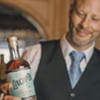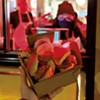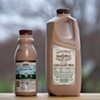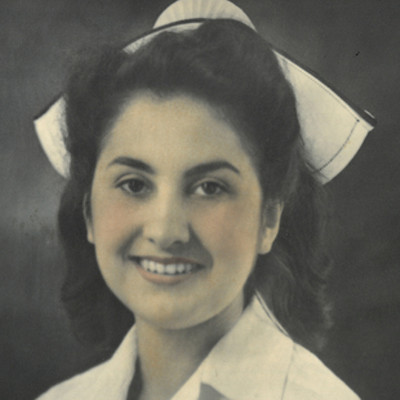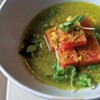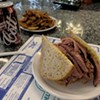click to enlarge 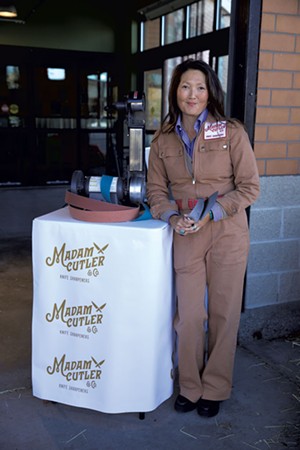
- Courtesy Of Irene Kim
- Linda Furiya with her knife-sharpening equipment
Linda Furiya wants to help people who suffer from what she calls "dull-knife shaming." A guest offers to help with meal prep. You hand over a cutting board and a sharp knife. After a few minutes, the guest asks, "Um, do you have another knife?" By which they mean a knife that is actually sharp.
Enter Furiya's alter ego, Madam Cutler, the face of the knife-sharpening service the Shelburne resident launched in the summer. Since early September, she has been popping up every Saturday at Healthy Living Market & Café in South Burlington to sharpen customers' knives for $5 to $18, depending on size.
Madam Cutler & Co. is the latest of many food-related ventures for Furiya, 56. Highlights of her varied career include penning a column about Asian cuisine for the San Francisco Chronicle; authoring two recipe-laced memoirs, Bento Box in the Heartland: My Japanese Girlhood in Whitebread America and How to Cook a Dragon: Living, Loving, and Eating in China; teaching cooking classes; and running a frozen dumpling business.
If you have dull knives and oncoming hordes of holiday guests, Madam Cutler is ready to swoop in and save you from shame.
click to enlarge 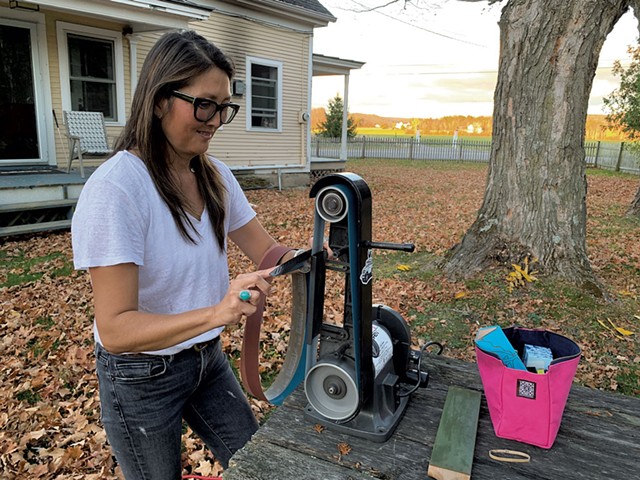
- Melissa Pasanen
- Linda Furiya with her knife-sharpening equipment
SEVEN DAYS: What inspired you to start Madam Cutler & Co.?
LINDA FURIYA: I've always known it was important to have sharp knives. I learned to sharpen knives from my dad when I was young. He would sharpen my mom's knife, this one Japanese knife that no one else could touch or use or wash.
The knife-sharpening business came from the hobby of bladesmithing. I started doing that around 2018 when I took a course in Waterbury. A bladesmith actually forges steel, shapes it and grinds it into a knife. If you learn to make knives, you cannot help but know how to sharpen knife edges. Someone asked me if I sharpened knives because they knew I was a bladesmith.
click to enlarge 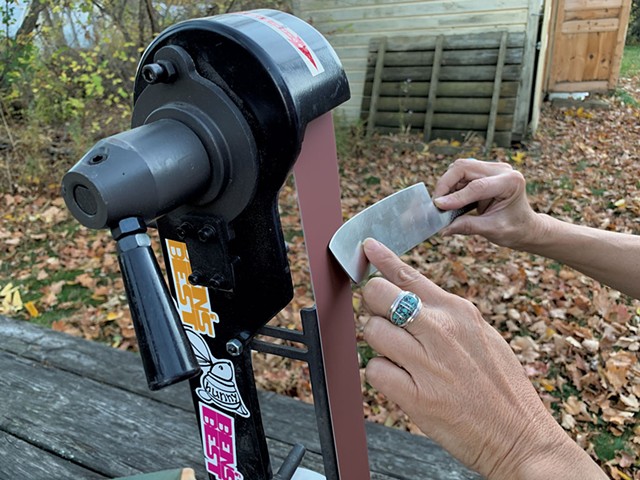
- Melissa Pasanen
- Linda Furiya with her knife-sharpening equipment
SD: Do you have a favorite knife?
LF: My first good knife was a Global Santoku knife. I still have it. It fits my hand really well. I got it because Anthony Bourdain loved Global knives. He was a hot ticket.
SD: How frequently should knives be professionally sharpened, and what can be done to keep knives in decent shape in between?
click to enlarge 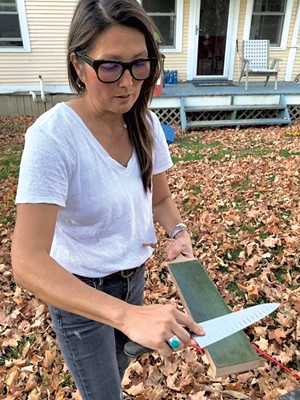
- Melissa Pasanen
- Linda Furiya with her knife-sharpening equipment
LF: It's based on usage, but I would say twice a year. Ideally, once every quarter if you cook a lot. In between, you can use a honing rod — but you have to know how to use them. If you have a knife block, you probably have a honing rod that's never been taken out. The problem is, you've got to use it after every use, before you put [your knife] away. And it doesn't work if your knives are already dull.
The only way to keep your knives sharp is to not use them. Every time you use a knife, you're bearing down on the edge, and tiny microscopic burrs are splintering out. The honing rod basically scrapes away those little tiny pieces.
When you bring your knife to me, I create a brand-new edge by grinding away the steel. It's like getting your teeth cleaned at the dentist. Then, for a while, you floss and you brush really well. Basically, honing is like flossing. After a while, even if you keep flossing, you have to go back and get it done again.
This interview was edited and condensed for clarity and length.













































